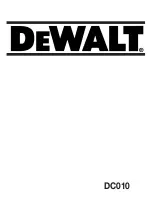
The range from which the random integer number is chosen to multiply the slot length in order
to get the access time period. This value is used when the previous channel event was a data
frame transmission from the same radio. Note that ACK is not considered a data frame.
○
Slots handicap [No]
Default = 0 [0=Min, 7=Max]
A fixed number which is always added to the random number of slots generated from the respect-
ive range (see above). The higher slot handicap a radio has, the lower chance to win the channel
access competition it may stand.
Note: The maximum number of slots used to calculate the channel access period is 14. When
the sum of the slot handicap and the generated random number exceeds 14, it is cut to that
figure.
•
Collision prevention
This menu allows for setting up a prevention mechanism against application-driven collisions. Per-
fectly synchronized simultaneous transmission requests arriving to different radios in long enough
intervals may always come in free channel conditions and consequently the zero access time period
is applied, resulting in a „guaranteed“ collision. Note: These are not the „common“ collisions taking
place when RF channel is heavily loaded.
○
Probability [%]
Default = 0 [0=0ff, 100=Max]
When a transmission request arrives in free channel conditions, a delay period defined below
is applied with the probability set.
○
Delay length [bytes]
Default = 10 [1=Min, 16000=Max]
This item is visible only when the „Probability“ value (see above) is non-zero. The actual delay
time period is calculated the same way as for e.g. the „Fix timeout [bytes]“ item defined above.
It is applied as the channel access period only when the RF channel is free (hence the normal
channel access period would be zero). When the RF channel is busy, standard mechanism of
random slotted access is used.
•
Others
○
Radio ARP timeout [min]
Default = 1440 [1=Min, 3579=Max]
Each IP device refreshes its ARP records within some timeout. Because of that, the device
transmits spontaneous ARP request packets to each IP address listed in its ARP table. That
may generate unwanted collisions on Radio channel. Since Radio IP and MAC addresses are
not changed during normal network operation, ARP table refreshing may be done in a long
period (1440 min. = 1 day).
The RipEX spontaneously transmits an ARP reply packet after each reboot. The ARP replay
packet transmission can be also invoked by executing Maintenance/Miscellaneous/BRC Radio
MAC button.
ARP reply packet refreshes the respective records in neighbouring units. This is necessary e.g.
when a RipEX unit has been replaced by a spare one with the same Radio IP address.
○
TX Buffer timeout
List box: Off, On.
Default = Off
When On, the „TX Buffer timeout“ (described below) applies to RF channel driver queues.
○
TX Buffer timeout [s]
Default = 5 [0.01=Min, 300=Max, Granularity 0.01s]
A frame waiting for transmission or ACK stays in the RF channel driver queues, until it is succes-
fully transmitted. The „TX Buffer timeout [s]“ may limit this stay to the given time period. When
this timeout expires, the respective frame is discarded and this event is recorded both in the
statistics (as „Rejected“) and in the monitoring (the respective frame is displayed with the "{Tx
buffer timeout}" tag).
93
© RACOM s.r.o. – RipEX Radio modem & Router
Advanced Configuration
Содержание RipEX 1.12.2
Страница 2: ......
Страница 172: ...RipEX Radio modem Router RACOM s r o 172 Safety environment licensing...
Страница 173: ...173 RACOM s r o RipEX Radio modem Router Safety environment licensing...
Страница 174: ...Fig 10 2 ATEX Certificate RipEX RipEX Radio modem Router RACOM s r o 174 Safety environment licensing...
Страница 175: ...175 RACOM s r o RipEX Radio modem Router Safety environment licensing...
Страница 176: ...RipEX Radio modem Router RACOM s r o 176 Safety environment licensing...
Страница 186: ...186...
Страница 187: ...Appendix C Revision History 187 RACOM s r o RipEX Radio modem Router Revision History...
















































